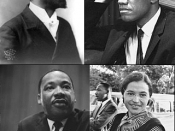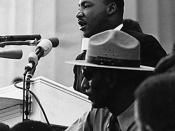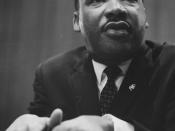IntroductionThis paper will make an attempt to shed light on their interconnectedness or, on the other hand, the different perspectives, which sew a great deal of mistrust and animosity into, what might have been considered by the majority of people as a coherent movement with set political agenda and well-thought out objectives. By taking a closer look at the most important Black performers that were shaping the future American society this paper will try to portray not only the major cleavages within the respective groups but also the reason why the movement shifted from non-violent sit-ins to more assertive and aggressive ways of advocating their claims. The studied organizations existing at the beginning of the 1960's are the following: Southern Christian Leadership (SCLC) and Student Non-violent Coordinating Committee (SNCC) 1.
History and milestonesThere is a common position for all three of them, in logic that they were established of a need to materialize the gains Black movement got in the 1950's through the very significant Supreme Court's rulings.
One of them concerned the school segregation case, which was struck down by the Topeka ruling in 1954. The court's decision officially did away with the "Separate but Equal" doctrine in public education. In 1956 the doctrine was undermined by another key decision delivered by the Supreme Court in the wake of the Montgomery bus boycott, which followed the arrest of a prominent NAACP member Rosa Parks. It was herself who unleashed the boycott by refusing to yield her place to a white person on the bus on December 1, 1955. The permanent inheritance of the boycott, as Roberta Wright wrote, was that "It helped to launch a 10-year national struggle for freedom and justice, the Civil Rights Movement that stimulated others to do the same at home and abroad" 10Although there...



Civil Right movement
Packed with a lot of great info with references
0 out of 0 people found this comment useful.